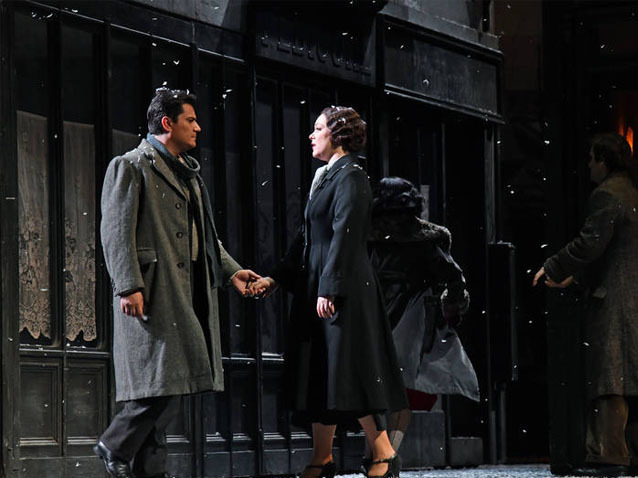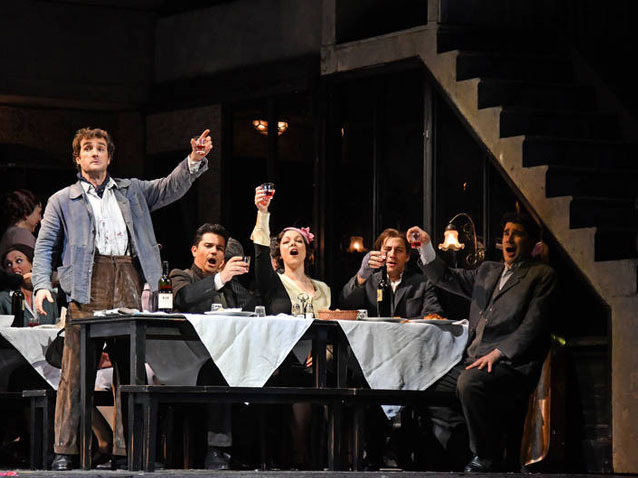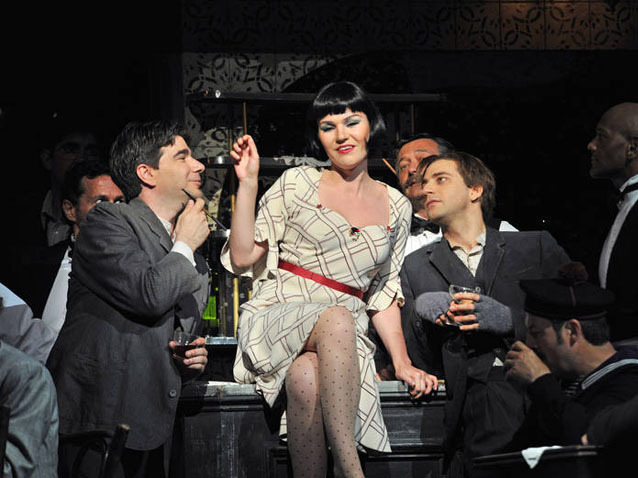 © DR
© DR
For his version of La Bohème, created in 2009 for the English National Opera and now shown at Liceu, Sir Jonathan Miller chose Paris in the thirties as its visual referent, the Paris that Cartier Bresson and Brassaï immortalised through photography. This is not the first time that the British director turns to well-known iconographic referents to visually frame an opera title. In 1982 he presented an inspired “mafia” Rigolettoset in Manhattan that became one of his greatest successes in the theatre world. In the last scene he recreated a 3D version of the celebrated painting “The Nighthawks” (1942), the most famous piece by Edward Hopper.
Beyond the quoted photographic reference, La Bohème’s agile production signed by Miller is classic and conventional in the drama, both in the presentation of the characters as well as in the situations and dramatic conflicts. The emotional, sentimental and ethical codes of the old Bohème’s soft “verismo” continue to function in today´s society and keep repeating in the plot of the most recent cinematographic melodramas. Jonathan Miller cautiously left these codes intact, allowing them -without superfluous additives- to unfold their traditional and demolishing action onto the sensitive souls of the audience.


The actors’ direction was correct and the only moment of imbalance, confusion and scenic mess (which seems to be inevitable in La Bohème) happened in the multitudinous beginning of the second scene.
Taking into account the long and distinguished interpretative tradition of the title (with more than 250 performances at the Barcelona opera house), this Liceu’s Bohème was more than correct but didn´t reach excellence. Nevertheless, the success was considerable since, as every theatre director knows well, an only correct Bohème is always a certain triumph.
Marc Piollet, appreciated in the house for his conducting in Carmen (2010-11) proposed a soft orchestral approach rich in nuances, with good phrasing and cautious in the dynamics, but without the dramatism or the melodramatic emphasis that tend to accompany Puccini´s scores. It was a good and elegant choice, but not everyone shared this opinion.
The Muscovite Tatiana Monogarova, debuting at Liceu, showed professionalism, dedication and good musical taste but her voice had an uneven colour throughout her tessitura, with a dark tone in the lower register that didn’t match the interpretative tradition of the role. She also lacked the brightness in the higher notes (though without shrillness) of the legendary sopranos having performed this role. Her work was very satisfactory but probably Mimì isn’t the character that best suits her voice. Matthew Polenzani, another debutant, does have a Rodolfo voice, homogeneous, beautiful and shiny on the highest register. He started maybe overcautious and in “Che gelida manina” didn´t quite sprout, but improved substantially in the last scenes.
Artur Ruciński was an ideal Marcello, confident, with a beautiful voice and good projection of sound. Nathalie Manfrino, still another debut, gave looseness, self-confidence, aggressiveness and coquetry to her Musetta, a choice which always makes the character and the performer succeed, although the voice wasn´t a wonder.
Very good David Menéndez in Schaunard and very insufficient Paul Gay as Colline, his “Vecchia zimarra” was poor weak, his voice wasn’t solid enough, especially in the lower register.
Good, very good, the choir that managed to work together in the middle of the scenic mess of the second scene.
Xavier Pujol
the 21 of June, 2016 | Print
Comments